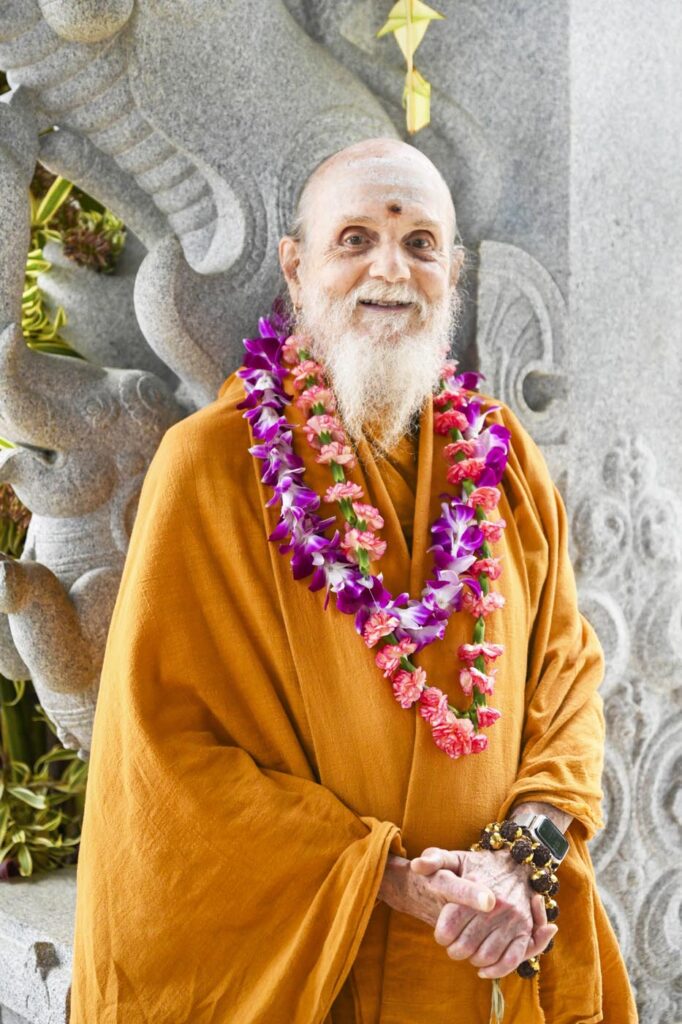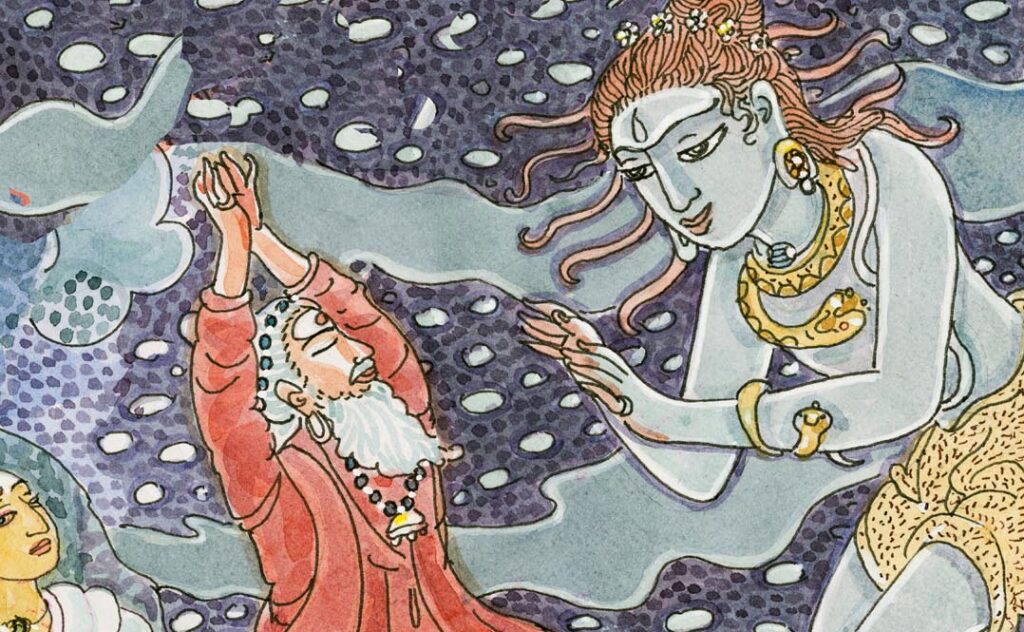An answer to the academic world’s notion that religion has been superceded by rational thought and the ascendance of science
By Satguru Bodhinatha Veylanswami

It may surprise some readers to learn that professors in today’s universities are increasingly claiming that humanity has outgrown religion, dismissing it as a primitive system of thought. A common rationale for this radical approach is that we are living in an age where truths are based not on faith but on empirical evidence and the scientific method. The existence of a Supreme Being, being based on faith, cannot be scientifically proven, so God’s existence is rejected.
When it comes to Hinduism, these anti-religion ideas overlook a central aspect. Hinduism is not about accepting the existence of a Supreme Being on faith; rather, it centers on the personal experience of Divinity in the present moment. Sadly, the modern world often overlooks Hinduism’s focus on personal experience of God, leading some to erroneously group it with religions they regard as no longer relevant. To bridge this gap, we can initiate a dialogue using a modern approach that is independent of traditional religious frameworks. Our first approach involves the concept of transcendence in Hinduism, which can be understood as a direct spiritual encounter. Generative AI tells us that “Transcendence involves a state of being or awareness that goes beyond the usual and mundane aspects of life, reaching a higher or more profound level of understanding, experience or existence.”
A well-known example is found in Transcendentalism, the literary and philosophical movement that emerged in the United States in the early 19th century. This school of thought regards nature as a source of inspiration and spiritual insight, believing that spending time in nature is a way to access heightened states of consciousness. Although there is no formal Transcendentalist movement today, many individuals still seek the beauty and seclusion of nature’s mountains, lakes, rivers and forests as their catalyst for experiencing an exalted state of consciousness.
In the modern school of Positive Psychology, transcendence can be found in all forms of beauty, from nature to art to mathematics to science and everyday experiences. Pointing out such broader catalysts can help individuals grasp the idea that Hindu religion is focused not merely on faith but on providing time-tested ways to experience higher consciousness.
Our second approach for appreciating Hinduism’s experiential nature is to explore the idea of spirituality. Generative AI gives this definition: “Spirituality is a broad concept that involves a sense of connection to something greater than oneself, often associated with a search for meaning in life. Spirituality is typically focused on the spirit or soul, rather than material or physical things, and it often involves practices or experiences that help individuals connect with their inner selves, others, the universe or a higher power.”
Spirituality and transcendence are related concepts. One difference is that spirituality rest on the idea that Divinity exists within the individual, that man has an eternal nature, or soul, that can be known through various practices such as yoga and meditation. Among those with a solid grasp of spirituality, it’s easy to convey that Hinduism centers on the personal quest for Divinity, supported by well-defined disciplines that guide this journey. Before exploring such disciplines, let’s look at how Hindus approach the question of the existence of God.
The superconscious insights of the rishis of a few thousand years ago are documented in the sacred Upanishadic scriptures. Consider the Shvetashvatara Upanishad (4.20). “His form is not to be seen; no one sees Him with the eye. By the heart, by thought, by the mind, one sees Him. Those who know this become immortal.”
In more recent times, we have the example of Sri Ramakrishna’s vision of Mother Kali documented in his biography: “At that very moment, Ramakrishna had a vision of the Goddess Kali. He described it as an overwhelming experience where the Divine Mother appeared before him, radiant and full of life. The world around him vanished, and he was filled with an indescribable joy and peace. He saw the Goddess not as a mere image but as a living, conscious reality. This experience left him in a state of divine ecstasy, and he realized that the Divine Mother was always with him, guiding and protecting him. This vision profoundly influenced Ramakrishna’s spiritual journey, affirming his belief in the living presence of the Divine Mother and shaping his teachings and life thereafter.”
Sometimes I am asked, “How do we know that God exists?” Perhaps not surprisingly, it is usually a child about ten to twelve years old asking this question. The answer I give is that we can know that God exists by reading the experiences of saints, such as Sri Ramakrishna. I assure them that we, too, will have such profound experiences, in this or a future life.
Hinduism provides two primary approaches to experience Divinity: temple worship and meditation. Many Hindus experience Divinity theistically, through worshiping in a temple. As my guru, Sivaya Subramuniyaswami, explained: “Hindu priests invoke the Gods to come and manifest for a few minutes within the sanctum of the temple. The Deities do come in their subtle bodies of light. They hover in and above the stone image and bless the people. If you are psychic and your third eye is open, you can see the God there and have His personal darshana.”
In 1969 my guru began taking groups of devotees on pilgrimages to holy places and people and I have continued these spiritual adventures, the most recent being to Sri Lanka in 2019. During visits to India and Sri Lanka, devotees attended grand ceremonies at ancient temples. Those temples, and the mystical rites within them, provoked visions in some devotees. They witnessed the stone or bronze murti moving and smiling at them, or turning into an animated, human-like figure. Others, with their eyes closed, inwardly saw the Deity’s face, as real as any living being. Though occasionally a devotee may have such a vision, the more common way we experience the Deity in a temple is as an uplifting, peaceful, divine energy radiating out from the sanctum, a blessed presence called sannidhya.
Hinduism provides a second way to experience Divinity, through meditation on one’s soul nature and its oneness with God—which is called monism. Our experience of going deeper and deeper within in meditation occurs in four steps. One step inward takes us to a consciousness that is content, creative and intuitive. Two steps brings us to the level of divine love for and oneness with all beings. Three steps within take us to the level of brilliant inner light and the realm of visions of Deities and rishis. After four steps within, we find ourself enveloped by omnipresent consciousness and the transcendent source of that consciousness.
A Sanskrit term commonly used for omnipresence is Satchidananda. Our Himalayan Academy lexicon gives this definition: “Satchidananda: Existence-consciousness-bliss. A synonym for Parashakti. Lord Siva’s Divine Mind and simultaneously the pure superconscious mind of each individual soul. Satchidananda is perfect love and omniscient, omnipotent consciousness, the fountainhead of all existence, yet containing and permeating all existence. Also called pure consciousness, pure form, substratum of existence, and more. One of the goals of the meditator or yogi is to experience the natural state of the mind, Satchidananda, holding back the vrittis through yogic practices.” My paramaguru, Yogaswami, had a concise way of explaining this state: “Sat Chit Ananda. That is one thing—Satchidananda. Sat is ‘you are.’ Chit is omnipresence—prakasha, light as from the sun, all-knowing. Ananda is bliss. They are three; but they are one. That is your nature.”
Hinduism does not ask followers to accept God’s existence merely on faith, to believe this or that. Rather, it boldly states that you can actually experience God and in that way prove God’s existence to yourself. Two methods, and there are more, for knowing God are: temple worship, where we can sense and even inwardly see God’s personal form; and meditation, where we can experience God as impersonal, omnipresent consciousness and its transcendent source. All of this is our answer to the question of Hinduism’s relevance. It will always have a vital role to play in providing seekers with time-proven methods for knowing God, which is, after all, the most compelling assurance of God’s existence there is.

Beautiful. Can you please offer me some guidance and explanation regarding the four steps of the meditative process described in this article as being monistic?